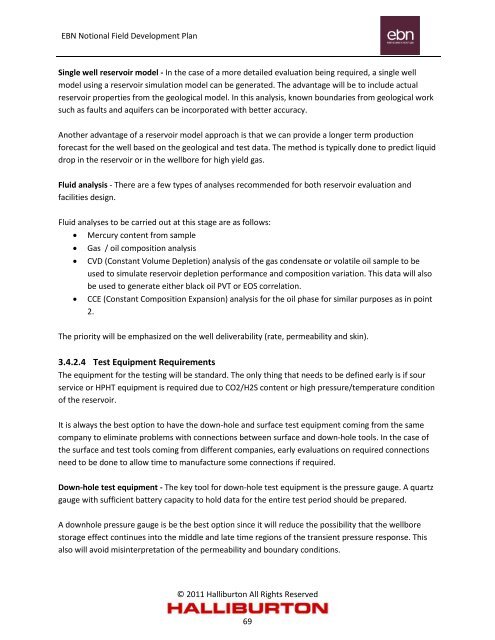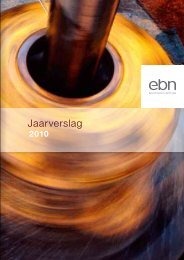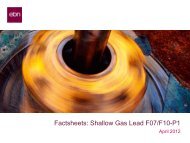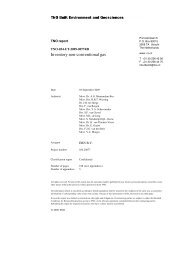Notional Field Development Final Report - EBN
Notional Field Development Final Report - EBN
Notional Field Development Final Report - EBN
Create successful ePaper yourself
Turn your PDF publications into a flip-book with our unique Google optimized e-Paper software.
<strong>EBN</strong> <strong>Notional</strong> <strong>Field</strong> <strong>Development</strong> Plan<br />
Single well reservoir model - In the case of a more detailed evaluation being required, a single well<br />
model using a reservoir simulation model can be generated. The advantage will be to include actual<br />
reservoir properties from the geological model. In this analysis, known boundaries from geological work<br />
such as faults and aquifers can be incorporated with better accuracy.<br />
Another advantage of a reservoir model approach is that we can provide a longer term production<br />
forecast for the well based on the geological and test data. The method is typically done to predict liquid<br />
drop in the reservoir or in the wellbore for high yield gas.<br />
Fluid analysis - There are a few types of analyses recommended for both reservoir evaluation and<br />
facilities design.<br />
Fluid analyses to be carried out at this stage are as follows:<br />
• Mercury content from sample<br />
• Gas / oil composition analysis<br />
• CVD (Constant Volume Depletion) analysis of the gas condensate or volatile oil sample to be<br />
used to simulate reservoir depletion performance and composition variation. This data will also<br />
be used to generate either black oil PVT or EOS correlation.<br />
• CCE (Constant Composition Expansion) analysis for the oil phase for similar purposes as in point<br />
2.<br />
The priority will be emphasized on the well deliverability (rate, permeability and skin).<br />
3.4.2.4 Test Equipment Requirements<br />
The equipment for the testing will be standard. The only thing that needs to be defined early is if sour<br />
service or HPHT equipment is required due to CO2/H2S content or high pressure/temperature condition<br />
of the reservoir.<br />
It is always the best option to have the down-hole and surface test equipment coming from the same<br />
company to eliminate problems with connections between surface and down-hole tools. In the case of<br />
the surface and test tools coming from different companies, early evaluations on required connections<br />
need to be done to allow time to manufacture some connections if required.<br />
Down-hole test equipment - The key tool for down-hole test equipment is the pressure gauge. A quartz<br />
gauge with sufficient battery capacity to hold data for the entire test period should be prepared.<br />
A downhole pressure gauge is be the best option since it will reduce the possibility that the wellbore<br />
storage effect continues into the middle and late time regions of the transient pressure response. This<br />
also will avoid misinterpretation of the permeability and boundary conditions.<br />
© 2011 Halliburton All Rights Reserved<br />
69







